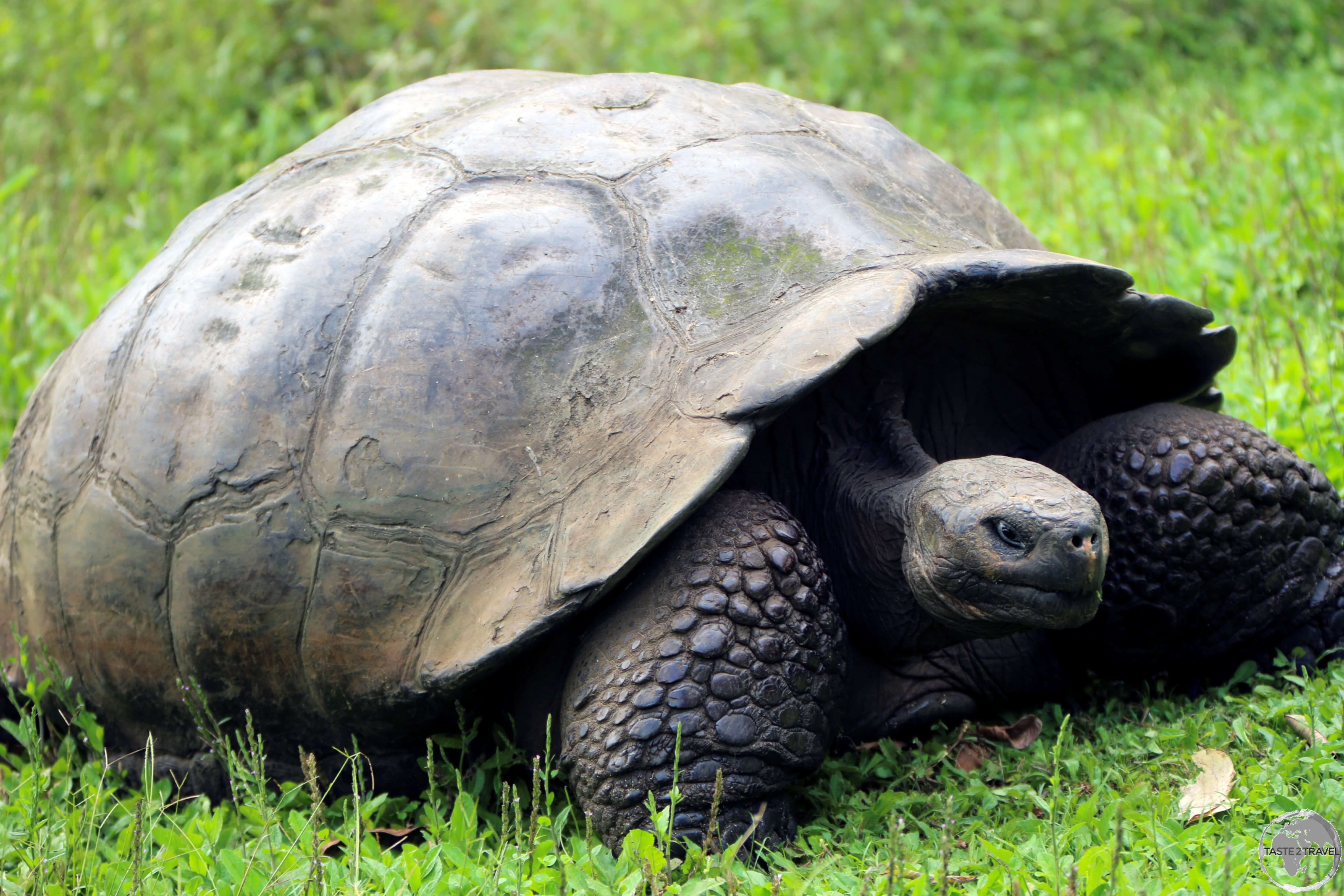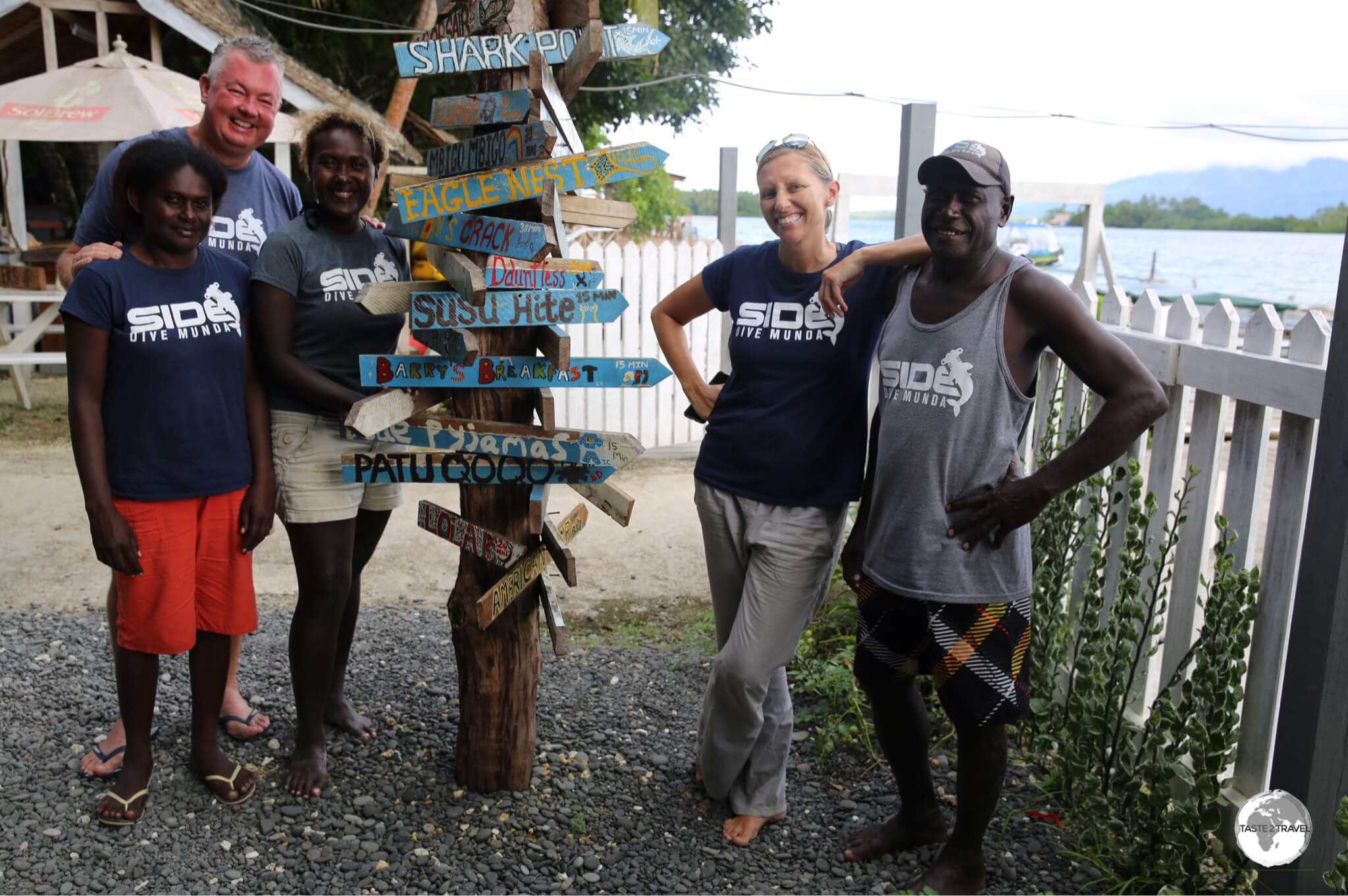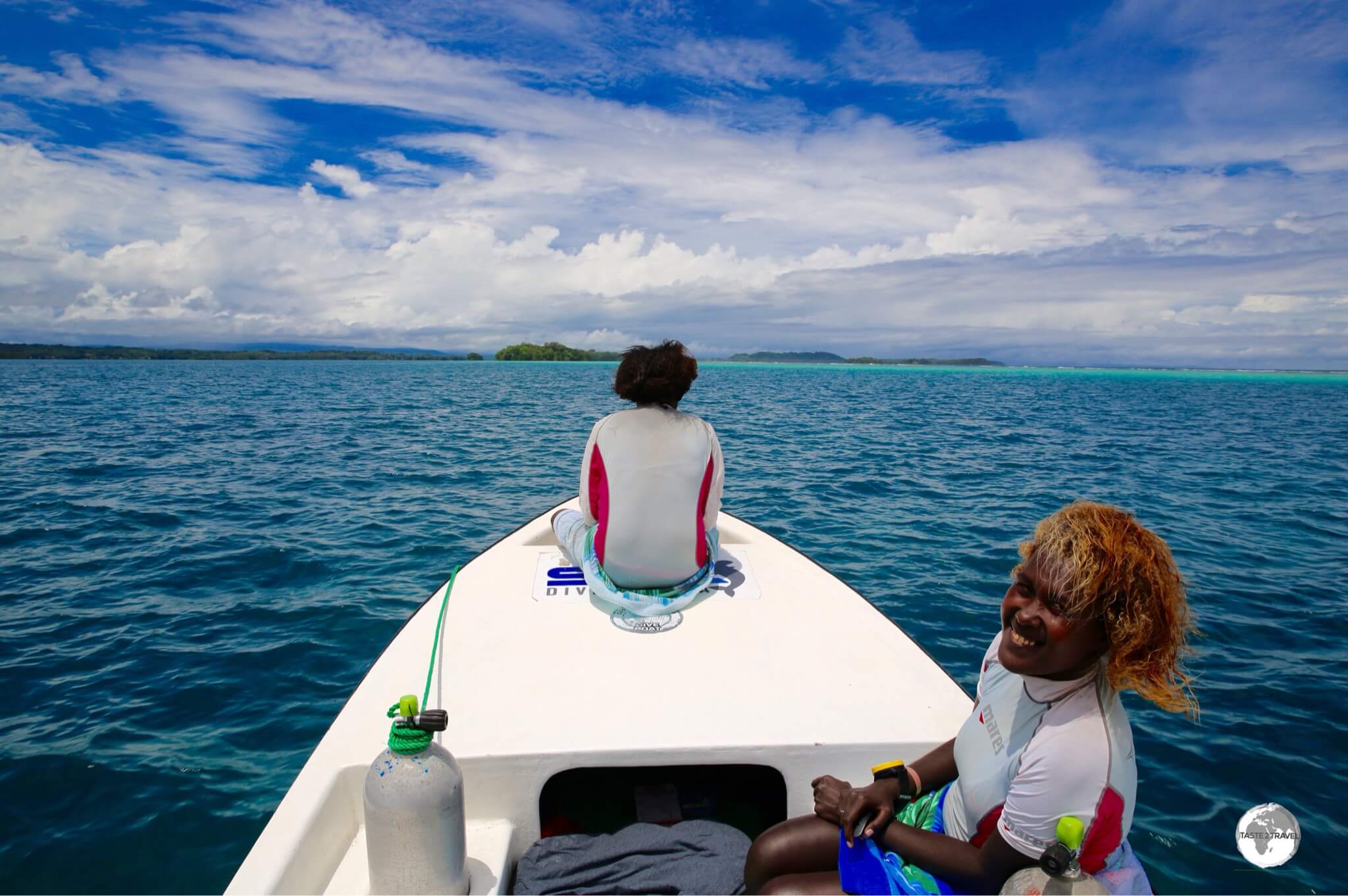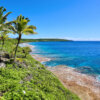Top 10 Pacific Island Experiences
Welcome to the taste2travel Top 10 Pacific Island Experiences feature.
Introduction
How appropriate to include the impressive Heart of Voh as the feature photo for this post, which lists my top ten, most-favourite, experiences throughout the Pacific Islands. If you’re looking for travel ideas for your next trip, you might find some inspiration from the list below.
It would be easy to compile a top ten list for each country, but in this post I have included an experience from 10 different islands with links to each country report for further reading.
Experiences
My personal “Top 10 Pacific Island Experiences” (listed in no particular order) are:
#1 – Vanuatu
Standing on the edge of the very active Mount Yasur Volcano.

Mount Yasur volcano, as viewed from the ash plain.
A short flight south of Éfaté, the main island of Vanuatu, is the rugged and largely undeveloped island of Tanna, which is home to the Mount Yasur volcano, the world’s longest continuously erupting volcano – 800 years and counting!

Walking on the edge of the crater at Mount Yasur.
It was the night-time glow from Mount Yasur that first attracted Captain James Cook to the island and today attracts intrepid travellers. If you’ve ever wanted to stand on the edge of the crater of an explosive, magma-filled volcano, Mount Yasur should be on your bucket-list. A truly magnificent, and at times scary, experience!

The night-time glow from the Mount Yasur volcano illuminates the night sky.
To be able to stand on the edge of the crater of such an active volcano, to stare into its molten heart, to feel the earth shake beneath your feet whenever it explodes (at least every 15 minutes), to feel volcanic ash raining down on you, to be overwhelmed by clouds of obnoxious, sulfurous gas, to be one step away from falling into the crater! Wow!

A spectacular sight – Mount Yasur Volcano.
Mount Yasur commands your respect and absolute attention. It’s one very powerful experience – always engaging and never dull! One thing that’s guaranteed from a visit is that all your senses will be fully assaulted!
For more on this destination, please refer to my Vanuatu Travel Guide.
#2 – New Caledonia
Flying over the Heart of Voh & the Blue Hole.

The famous Heart of Voh is a natural heart-shaped bog in the middle of a mangrove swamp.
Located on the west coast of the main island of New Caledonia, the Heart of Voh is a heart-shaped natural bog in the middle of a mangrove swamp, made famous by French photographer Yann Arthus-Bertrand who featured the heart on the front cover of his best-selling photography book – Earth from Above.

Ready to depart Koné airport on my ultra-light sightseeing trip to the Heart of Voh and the magnificent Blue Hole.
Sightseeing flights are conducted using tiny ultra-light planes (room for one passenger only) which are so light that the entire plane is fitted with a built-in parachute, which, in the event of an emergency, allows you to sit back while the plane drifts back to earth.

With the wonderful and very capable Captain Rudy, flying over Voh.
I flew with the very competent Captain Rudy from Nord Ulm who, upon final approach to the airfield, added to the amazing experience by shutting off the engine and gliding us back to earth, landing safely on the runway at Koné airport. A magical experience!

Blue Hole of Voh, New Caledonia.
While on the flight, we flew over the spectacular Blue Hole, a natural hole in the middle of the lagoon (apparently 200 m deep) which is surrounded by a fringing reef that acts as a natural protection barrier. The only way to appreciate this wonder is from the air.

The Lagoon which surrounds La Grande Terre is the longest continuous barrier reef in the world and is UNESCO World-Heritage listed.
For more on this destination, please refer to my New Caledonia Travel Guide.
#3 – American Samoa
Hiking the quiet trails of the American Samoa National Park.

American Samoa National Park
Created in 1988, the territory’s sole national park protects huge swathes of pristine landscapes and marine environments on Tutuila and the Manu’a Islands and was the highlight of my visit to American Samoa.

“Fatu ma Futi” – a beautiful sight outside of Pago Pago.
The park is one of the five least visited parks in the US National Park System and is often the last one visited by those who aim to visit all 59 USNPS parks.

The National Park of American Samoa covers three of the islands of American Samoa.
For more on this destination, please refer to my American Samoa Travel Guide.
#4 – Pohnpei, Micronesia
Exploring the ruins of Nan Madol.

The incredible Nan Madol
Located in a remote coastal setting on the Micronesian Island of Pohnpei, Nan Madol is the largest ruin complex in the Pacific and is one of today’s great archaeological enigmas.
If this was anywhere else in the world you would be lining up to buy a ticket and jostling with hordes of tourists who would be constantly photo-bombing your shots. But here, on remote Pohnpei, you’ll probably have the sight to yourself. The ruined city is very impressive and extensive, but the addition of being in such a remote place makes a visit a truly unique experience.
You reach the ruins after a 10 minute walk along a track, which leads you through a steamy mangrove forest. You have to pay three different property owners an ‘access’ fee along the way, the last payment (US$5) is to the man who transports you across a narrow channel in his kayak, dropping you at the main entrance to the ruins.
For more on this destination, please refer to my Pohnpei Travel Guide.
#5 – French Polynesia
Enjoying the stunning turquoise lagoon and rugged volcanic scenery of Moorea.

The dazzling blue waters of the Moorea lagoon.
From its dazzling, turquoise-blue, lagoons to its emerald-coloured, razor-back, volcanic peaks, French Polynesia is a veritable south Pacific paradise.
Reaching the island of Moorea from the main island (Tahiti) is made easy thanks to frequent ferry connections which connect the two islands in under an hour.

A view of the Sofitel Moorea resort and the stunning lagoon from the lookout.
Once there, exploring Moorea is made easy thanks to the island’s impossibly steep terrain. A single ring road circumnavigates the island with a couple of short roads providing access to the mountainous interior. The turquoise lagoon is a favourite playground for tourists who have a choice of deluxe accommodation, including the Sofitel resort.

A pineapple plantation on the ‘Route des Ananas’.
Leaving the ring road briefly, the Route des Ananas (The Pineapple Route) winds its way through sprawling pineapple plantations before joining up with the one other interior road – which winds its way up through many switchback turns to the lofty Belvedere Lookout.

Created by ancient volcanoes, Moorea is incredibly rugged and beautiful.
For more on this destination, please refer to my French Polynesia Travel Guide.
#6 – Chuuk, Micronesia
Scuba diving on a fleet of Japanese WWII Navy ships in the amazing Chuuk Lagoon.

Fujikawa Maru
In other places you can dive a single wreck, on Chuuk you can dive a whole fleet. While Chuuk is another beautiful, remote, Pacific atoll, the main reason travelers come here is to dive the plethora of wrecks which lay at the bottom of the lagoon.
Chuuk offers world-class wreck diving and with over 60 wrecks, from supply vessels to planes and a submarine, there is plenty to keep divers busy.

Stormy skies over Chuuk
Chuuk lagoon is the world’s largest ship graveyard, with the wrecked Japanese fleet now known as the ‘Ghost Fleet of Truk Lagoon‘. The fleet was first brought to the world’s attention in 1969 when Jacques Cousteau and the Calypso team explored the lagoon and it’s wrecks, producing the TV documentary “Lagoon of Lost Ships“. The documentary put Chuuk on the world diving map and changed the fortunes of the island.
For more on this destination, please refer to my Chuuk Travel Guide.
#7 – Galapagos Islands
Wildlife watching, hiking and swimming in a surreal paradise.

A Marine Iguana at Punta Pitt, Galapagos Islands.
Although not normally considered a ‘Pacific’ destination, the Galápagos Islands are located in the Pacific Ocean, 1,000 km off the coast of Ecuador. This remote, volcanic archipelago is home to an abundance of unique, endemic, wildlife such as giant tortoises, iguanas, fur seals, sea lions, penguins and 26 species of native birds.

A Galápagos Sea lion basking in the midday sun on Santa Fe island.
It was the study of these animals, and their adaptation to their unique environment that lead Charles Darwin to publish his Natural Selection Theory after he journeyed to the islands on the H.M.S. Beagle.

Giant Tortoise on Santa Cruz Island.
Formerly known as the Islas Encantadas (the Enchanted Isles), the Galápagos Islands are today a popular tourist destination, easily reached via a two-hour flight from the Ecuadorian mainland. Despite their easy accessibility and popularity (200,000 tourists visit annually), the pristine islands still maintain their enchantment.

The most beautiful stretch of sand in the Galápagos – Gardener Bay, Española Island
Many of the 18 islands of the archipelago feature beautiful beaches, the most stunning of which is the wide, powdery-white sand Gardener Bay, where you can snorkel and swim with many curious sea lions.

A playful Galápagos Sea lion on South Plaza Island.
For more on this destination, please refer to my Galapagos Islands Travel Guide.
#8 – Solomon Islands
Diving with the amazing team from Dive Munda.

Gin-coloured waters of the Solomon Islands.
When it comes to dive shops, I don’t normally play ‘favourites’, but, if I had to nominate one outstanding dive operation in the Pacific, it would be the amazing Dive Munda in the Solomon Islands. Dive Munda is owned and operated by the enthusiastic, energetic, charming and engaging Belinda Botha who is a South African native who now calls Munda home.

The team at Dive Munda (l-r) Jeno, myself, Euna, Belinda and Sunga.
Belinda is a tour-de-force who has become Munda’s #1 fan and promoter and it’s leading environmental champion. She has employed an incredibly capable team of locals who are the dive masters, boat captain and (during surface intervals on remote islands) flowery-lei makers. They are a truly talented bunch and I loved spending time with them. Some of the best dive memories ever!

The Dive Munda team (l-r), Sunga, Jeno and Euna made a beautiful flowery lei during our surface interval.
Munda was a major battleground during WWII and the turquoise-coloured waters of the stunning Roviana Lagoon are littered with interesting wrecks from ships to downed fighter planes. The reefs around Munda are in pristine condition with an incredible amount of lush hard and soft corals and massive Elephant Ear sponges. Marine life is abundant with sight names such as ‘Shark Point‘ offering a hint of what lies below.

On our way to dive ‘Shark Point’.
For more on this destination, please refer to my Solomon Islands Travel Guide.
#9 – Aitutaki, Cook Islands
Heaven on earth!

The shallow, pristine, turquoise waters of Aitutaki lagoon are teeming with marine life, making it an ideal snorkelling spot.
Aitutaki is one of the Cook Islands, located 264 km directly north of the main island of Rarotonga. This unspoilt, paradise has some of the cleanest air you’ll ever breathe and some of the purest, clearest water you’ll ever have the pleasure to swim, snorkel or scuba dive in.

A nice way to unwind after a hard day of snorkeling.
An ancient, eroded volcano, it consists of a main island, a turquoise lagoon and a surrounding barrier reef. The lagoon’s waters teem with marine life, all of which can easily be seen with a snorkel and mask. The shallow waters (1-3 metres) provide snorkelers of all levels with the opportunity to experience the amazing underwater world in this pristine paradise. Beyond the reef, the deep, clear waters of the Pacific ocean offer spectacular scuba diving.

Flying over Aitutaki lagoon in the Cook Islands.
A popular day trip while on the island is to take a traditional, wooden boat to the small, uninhabited islands called ‘motu’ which can be found in the lagoon.

Exploring one of the many islands in the lagoon on a day trip.
#10 – Palau
Exploring an ancient culture and a pristine marine environment.

The spectacular Rock Islands of Palau.
Palau is known for its pristine environment, abundant marine life, anti-shark fishing policy and strict environmental regulations which apply inside the Palau National Marine Sanctuary, the world’s sixth largest sanctuary, covering an area twice the size of Mexico. At the centre of the sanctuary are the Rock Islands – 300 uninhabited limestone bumps surrounded by the most amazing turquoise water teeming with marine life.

Bai at Aimeliik.
Palau also has a fabulously rich, complex and unique culture – one which is still actively practiced. Colourful, traditional meeting houses, known as Bai’s, dot the landscape. Wooden carvings, known as ‘storyboards’, tell traditional folk stories.

Traditional Palau ‘storyboard’ wood carving
All of this makes Palau an interesting and engaging destination for those willing to get off the beaten track. This remote, pristine Pacific island nation is not easy to reach – and – once there, is very expensive – but – it’s definitely worth the effort and cost.

Detail of traditional Bai
For more on this destination, please refer to my Palau Travel Guide.
That’s the end of my Pacific Top 10 Experiences post. I hope it has provided some inspiration for your next trip.
Safe travels!
Darren
Follow me on Instagram:
Further Reading
Other travel reports from the Pacific region:
- American Samoa
- Central Pacific Island Hopping
- Chuuk
- French Polynesia
- Galapagos Islands
- Guam
- Kiribati
- Kosrae
- Marshall Islands
- New Caledonia
- Palau
- Pohnpei
- Solomon Islands
- Tonga
- Tuvalu
- Vanuatu
Top 10 Pacific Island Experiences Top 10 Pacific Island Experiences Top 10 Pacific Island Experiences Top 10 Pacific Island Experiences Top 10 Pacific Island Experiences Top 10 Pacific Island Experiences
Author: Darren McLean
Darren McLean is an Australian full-time digital nomad who has spent 36 years on a slow meander around the globe, visiting all seven continents and 239 UN+ countries and territories.
He founded taste2travel to pique one’s curiosity and inspire wanderlust.






